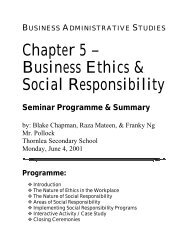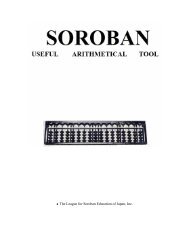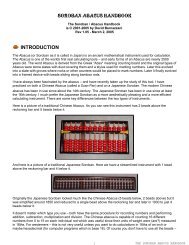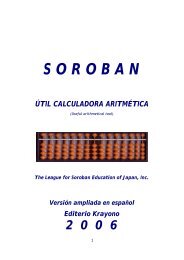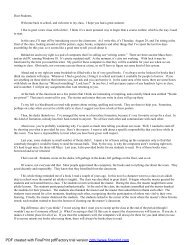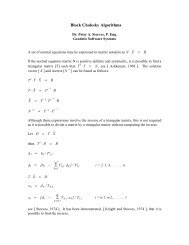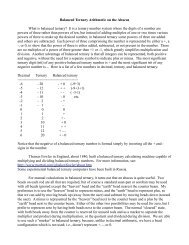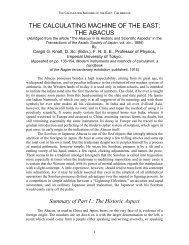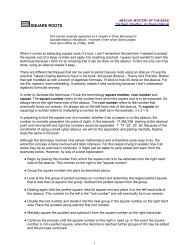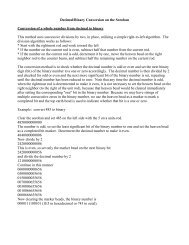Sexing Political Identities-Nationalism as Heterosexism.pdf
Sexing Political Identities-Nationalism as Heterosexism.pdf
Sexing Political Identities-Nationalism as Heterosexism.pdf
You also want an ePaper? Increase the reach of your titles
YUMPU automatically turns print PDFs into web optimized ePapers that Google loves.
Heterosexist ideology involves a symbolic order/intersubjective meaning<br />
system of hierarchical dichotomies that codify sex <strong>as</strong> male–female biological<br />
difference, gender <strong>as</strong> m<strong>as</strong>culine–feminine subjectivity, and sexuality <strong>as</strong><br />
heterosexual–homosexual identication. 11 <strong>Heterosexism</strong> is ‘naturalized’<br />
through multiple discourses, especially western political theory and religious<br />
dogma, and by reication of the (patriarchal) ‘family’ <strong>as</strong> ‘pre-political’ – <strong>as</strong><br />
‘natural’ and non-contractual. The binary of male–female difference is<br />
exemplied and well documented in western metaphysics (hence, political<br />
theory/practice) but evident in all collective meaning systems where the<br />
hierarchical dichotomy of gender is foundational to symbolic ordering and<br />
discursive practice. This symbolic ordering produces the binary of male–<br />
female bodies <strong>as</strong> well <strong>as</strong> a binary of m<strong>as</strong>culine–feminine identities. The<br />
conceptual ordering of m<strong>as</strong>culine over feminine is inextricable from political<br />
ordering imposed in state-making and reproduced through m<strong>as</strong>culinist<br />
discourse (political theory, religious dogma) that legitimizes the state’s hierarchical<br />
relations. Insofar <strong>as</strong> (hegemonic) m<strong>as</strong>culinity is constituted <strong>as</strong> re<strong>as</strong>on,<br />
order, and control, m<strong>as</strong>culine domination is reproduced through conceptual<br />
systems that privilege male entitlement – to authority, power, property,<br />
nature. Central to this ideology is male entitlement to women’s sexuality,<br />
bodies, and labor.<br />
<strong>Heterosexism</strong> <strong>as</strong> sex/affect involves the normalization of exclusively<br />
heterosexual desire, intimacy, and family life. Historically, this normalization<br />
is inextricable from the state’s interest in regulating sexual reproduction,<br />
undertaken primarily through controlling women’s bodies, policing sexual<br />
activities, and instituting the heteropatriarchal family/household <strong>as</strong> the b<strong>as</strong>ic<br />
socio-economic unit. This normalization entails constructions of gender<br />
identity and hegemonic m<strong>as</strong>culinity <strong>as</strong> heterosexual, with corollary interests<br />
in women’s bodies <strong>as</strong> objects of (male) sexual gratication and the means<br />
of ensuring group continuity. In complex – and even contradictory – ways,<br />
m<strong>as</strong>culinity <strong>as</strong> entitlement and control is here linked to heterosexual practice<br />
<strong>as</strong> an expression of power and violence. In short, and <strong>as</strong> feminists relentlessly<br />
document, the hegemonic m<strong>as</strong>culinity constituted by heterosexist practice<br />
normalizes the subordination of women and naturalizes rape <strong>as</strong> an expression<br />
of male power against women and ‘insufciently m<strong>as</strong>culine’ men.<br />
The argument here is that rape is not reducible to but is inextricable from<br />
heterosexism. To clarify briey, the objectication of women and forced<br />
penile penetration <strong>as</strong> an expression of power requires for its intelligibility the<br />
polarized identities and objectication of the feminine that is constituted by<br />
heterosexist ideology, identities, and practice. In this framing, women/the<br />
feminine are p<strong>as</strong>sive and denigrated by denition and it is the denitively<br />
m<strong>as</strong>culine role of agency and penetration that exemplies heterosexism,<br />
whether the denigrated object of that agency is female or male. Hence, male–<br />
male rape exemplies heterosexism’s objectication of the feminine even<br />
though no females are involved. Stated differently, the willingness/desire to<br />
rape is not established by the presence of a (normally accid) penis but by the<br />
40 International Feminist Journal of Politics




